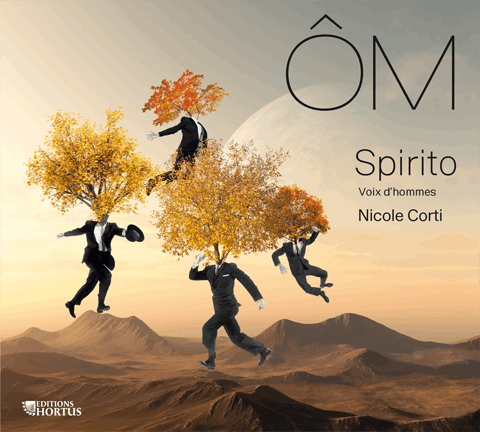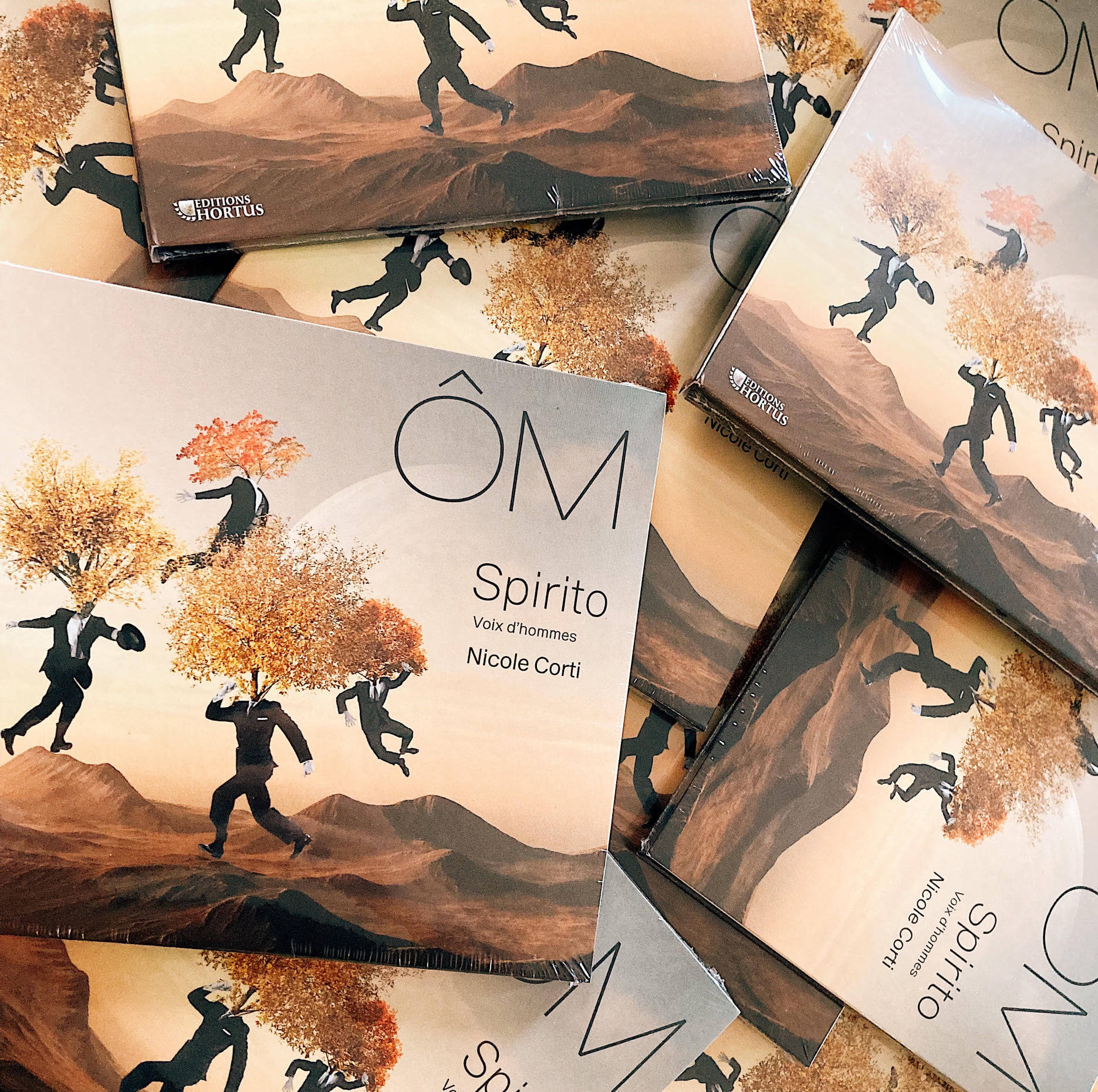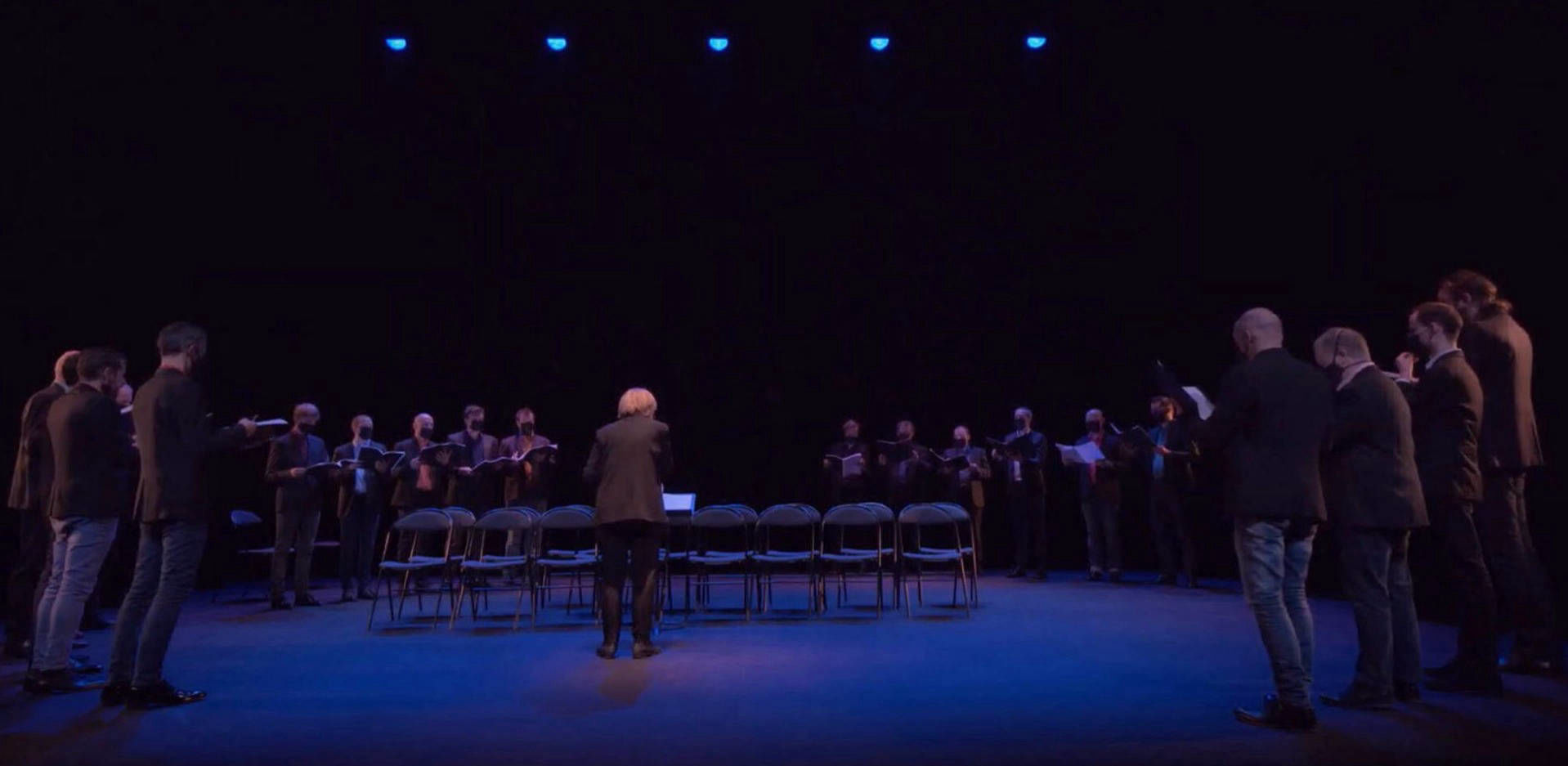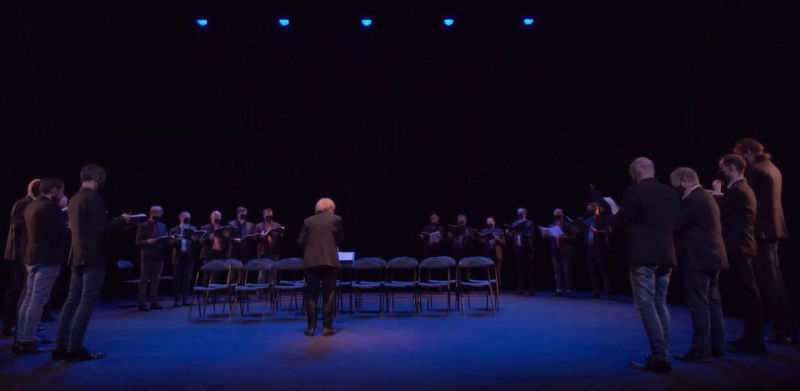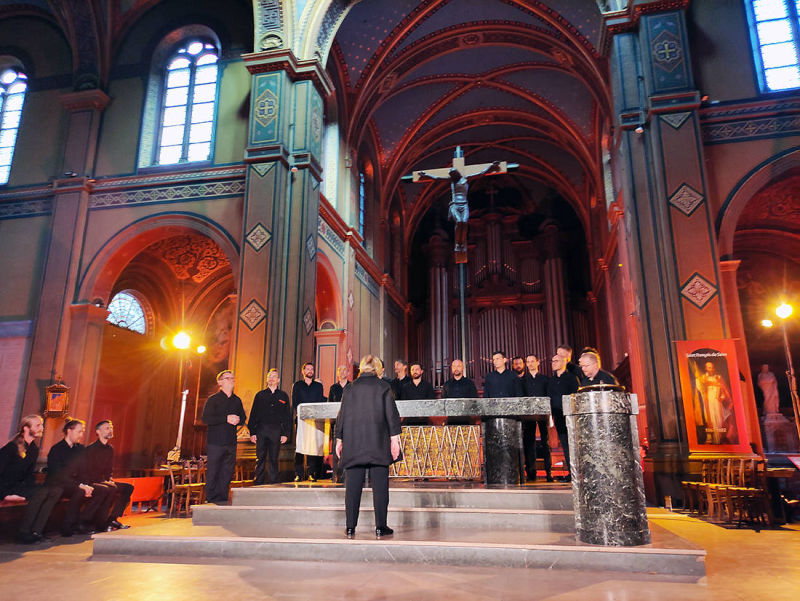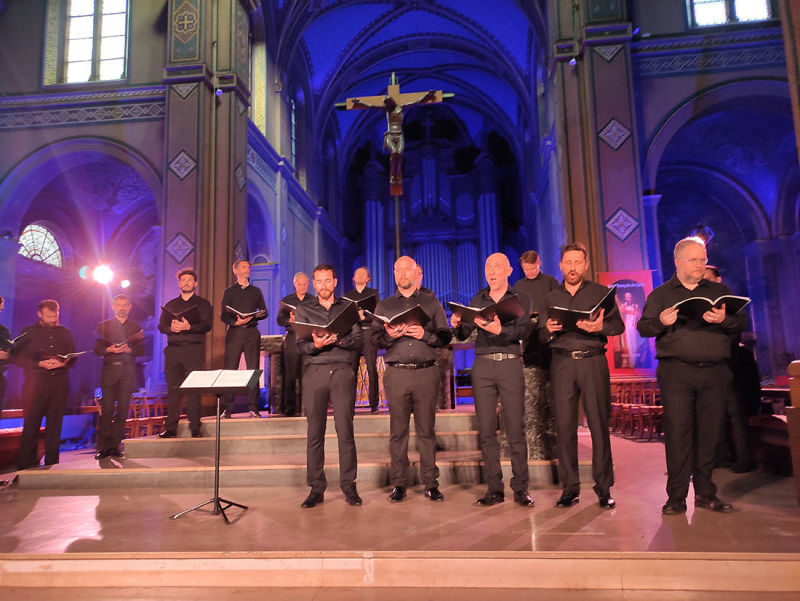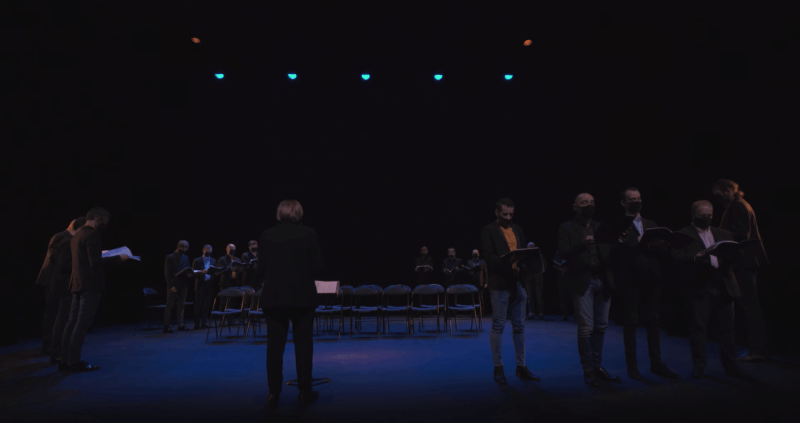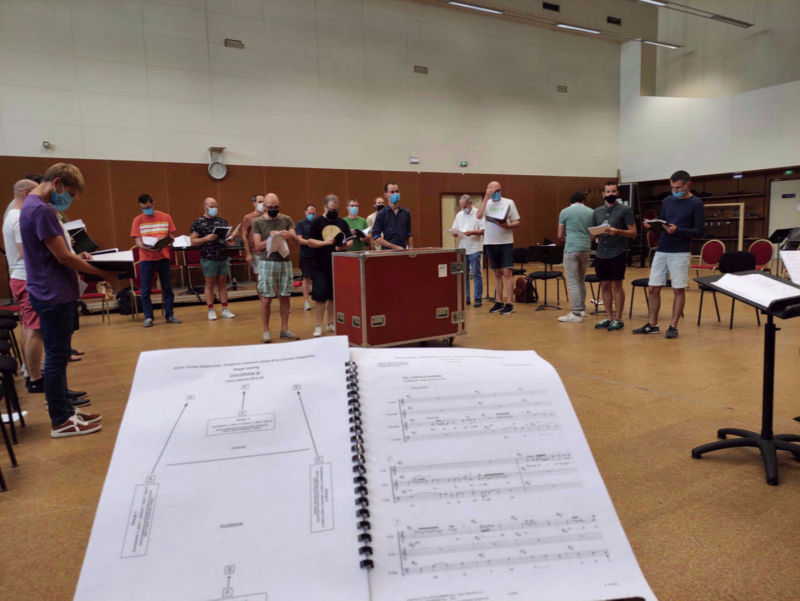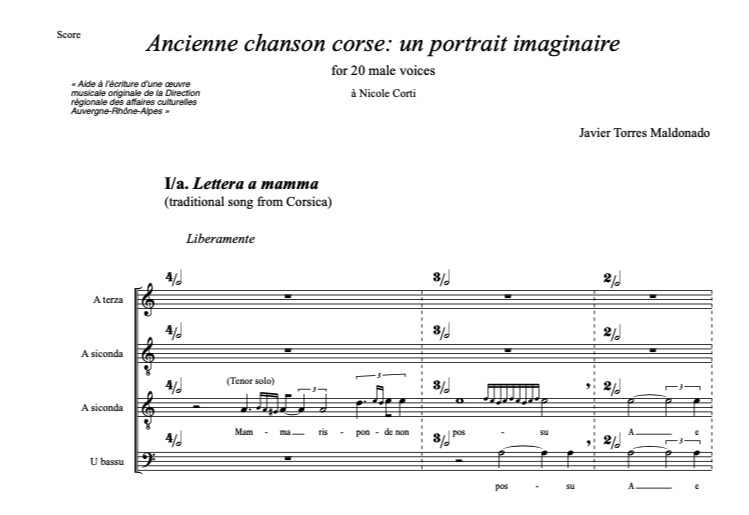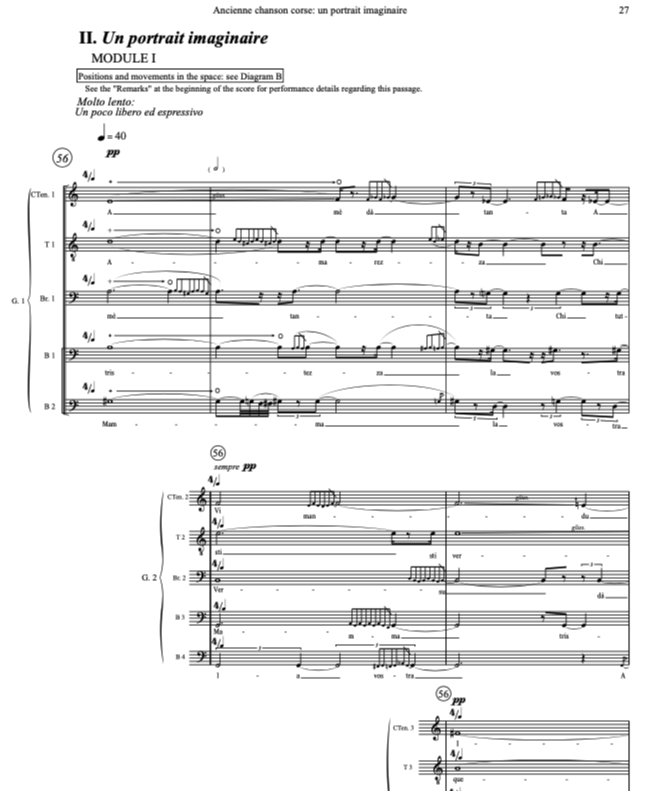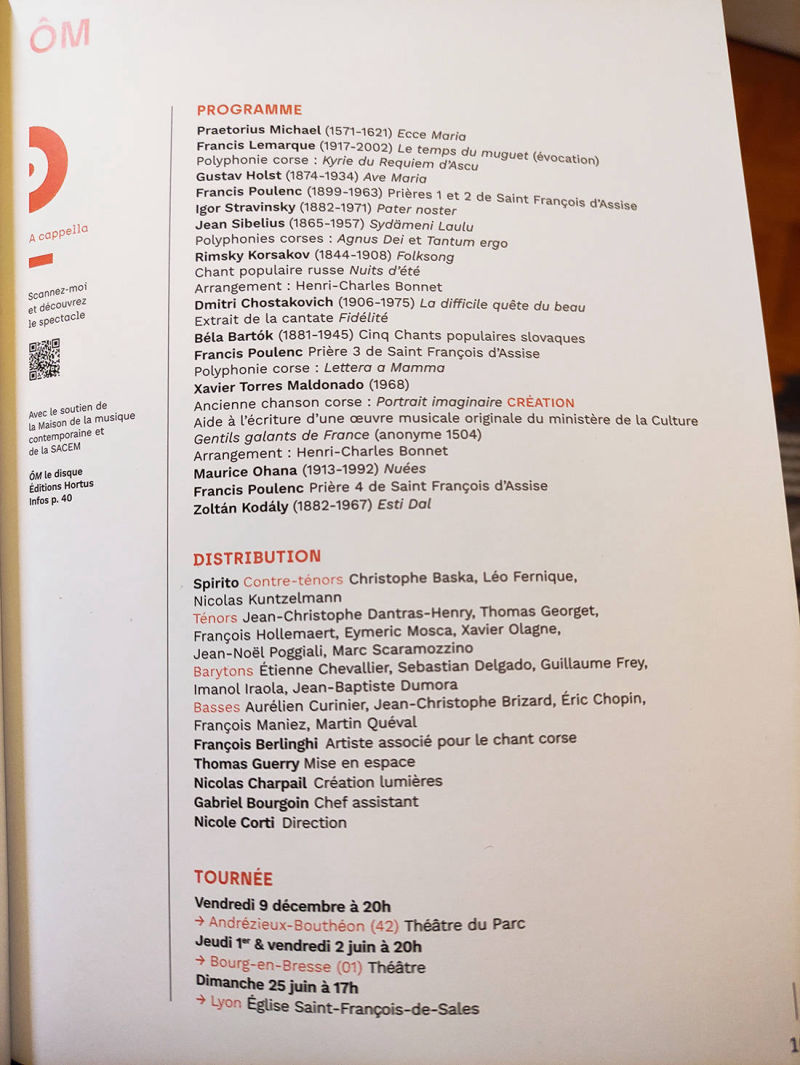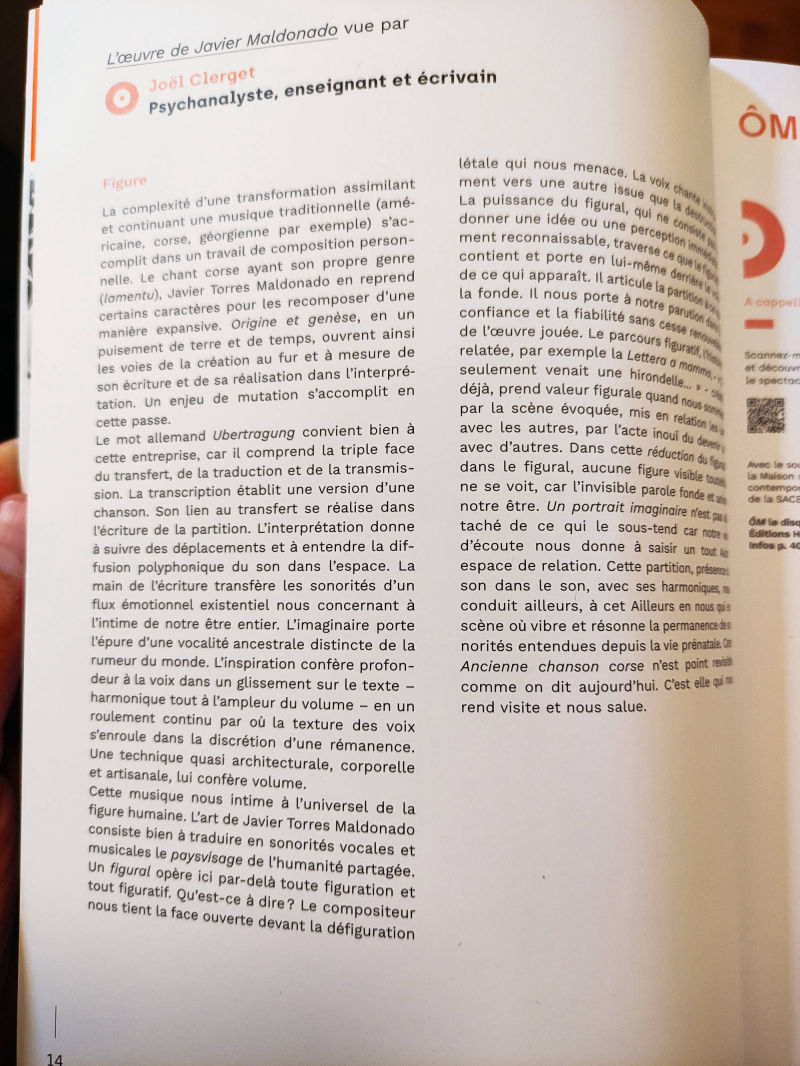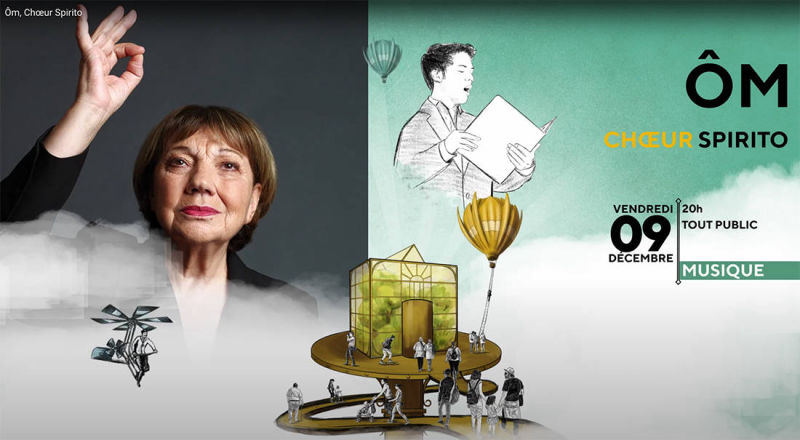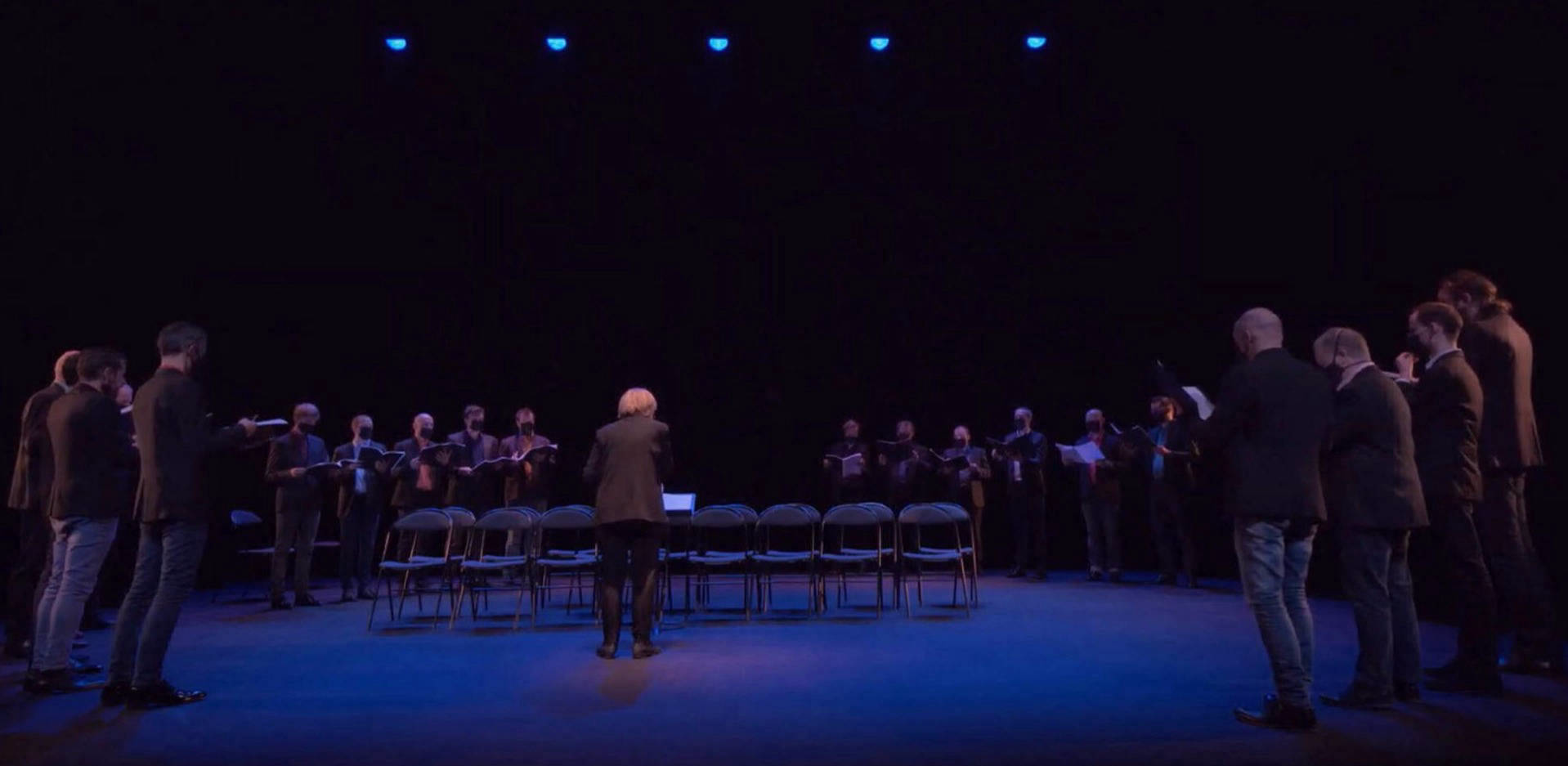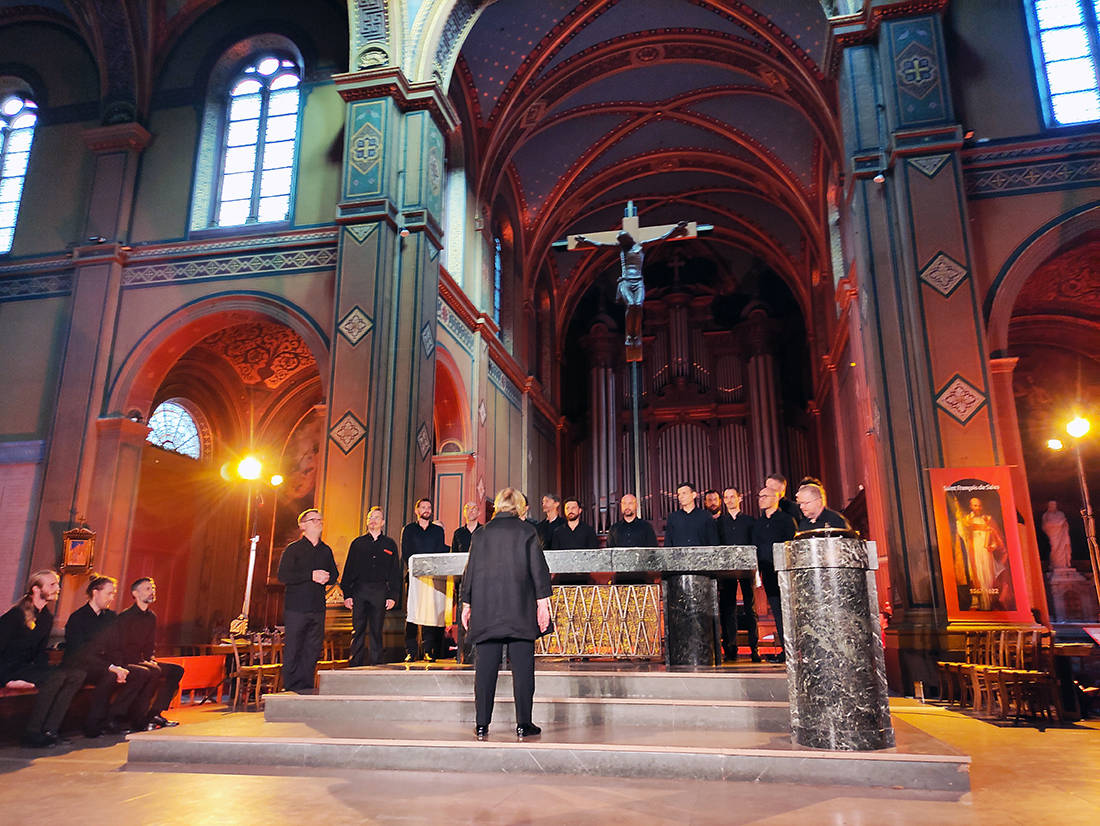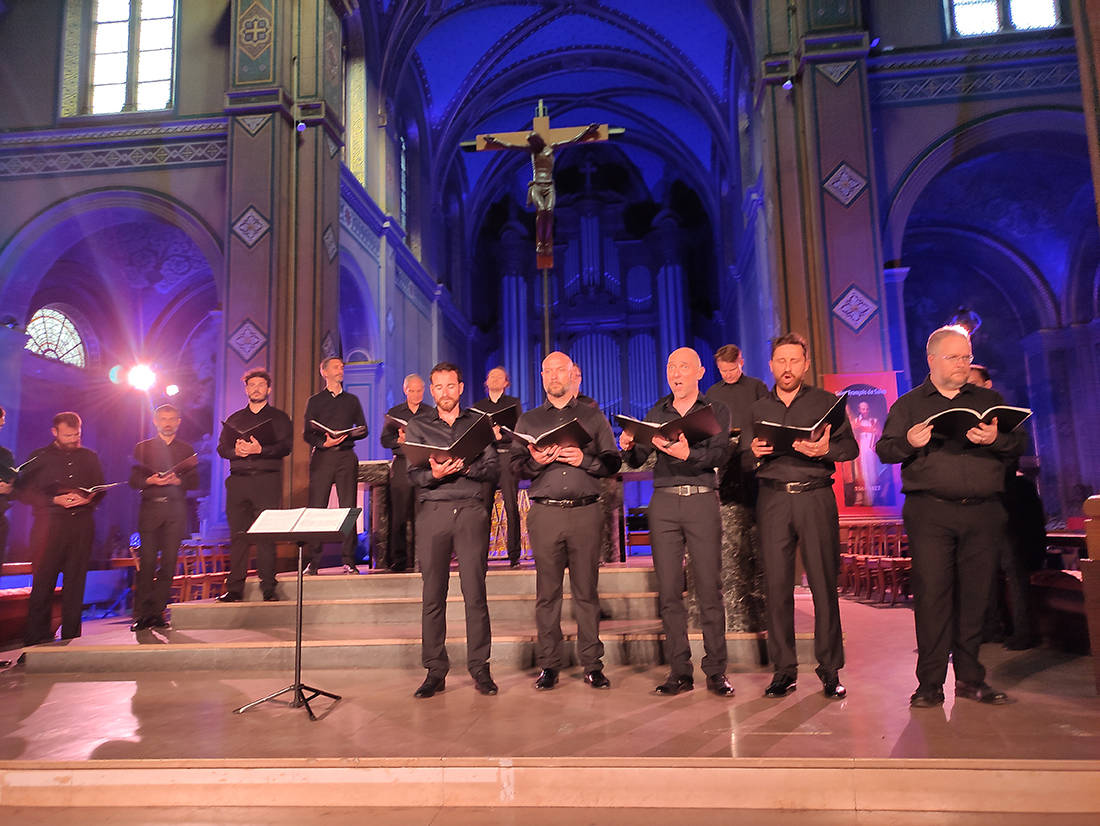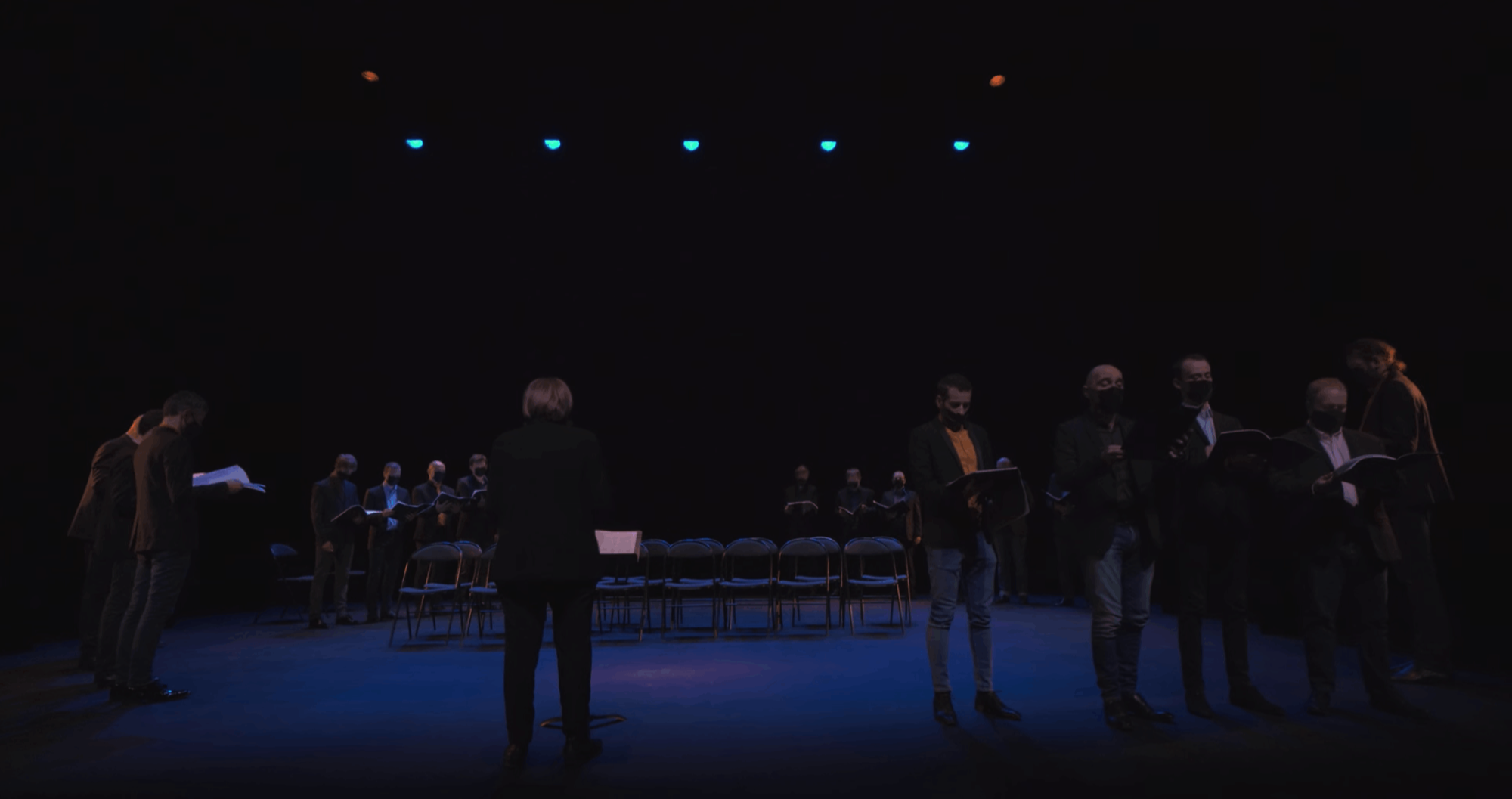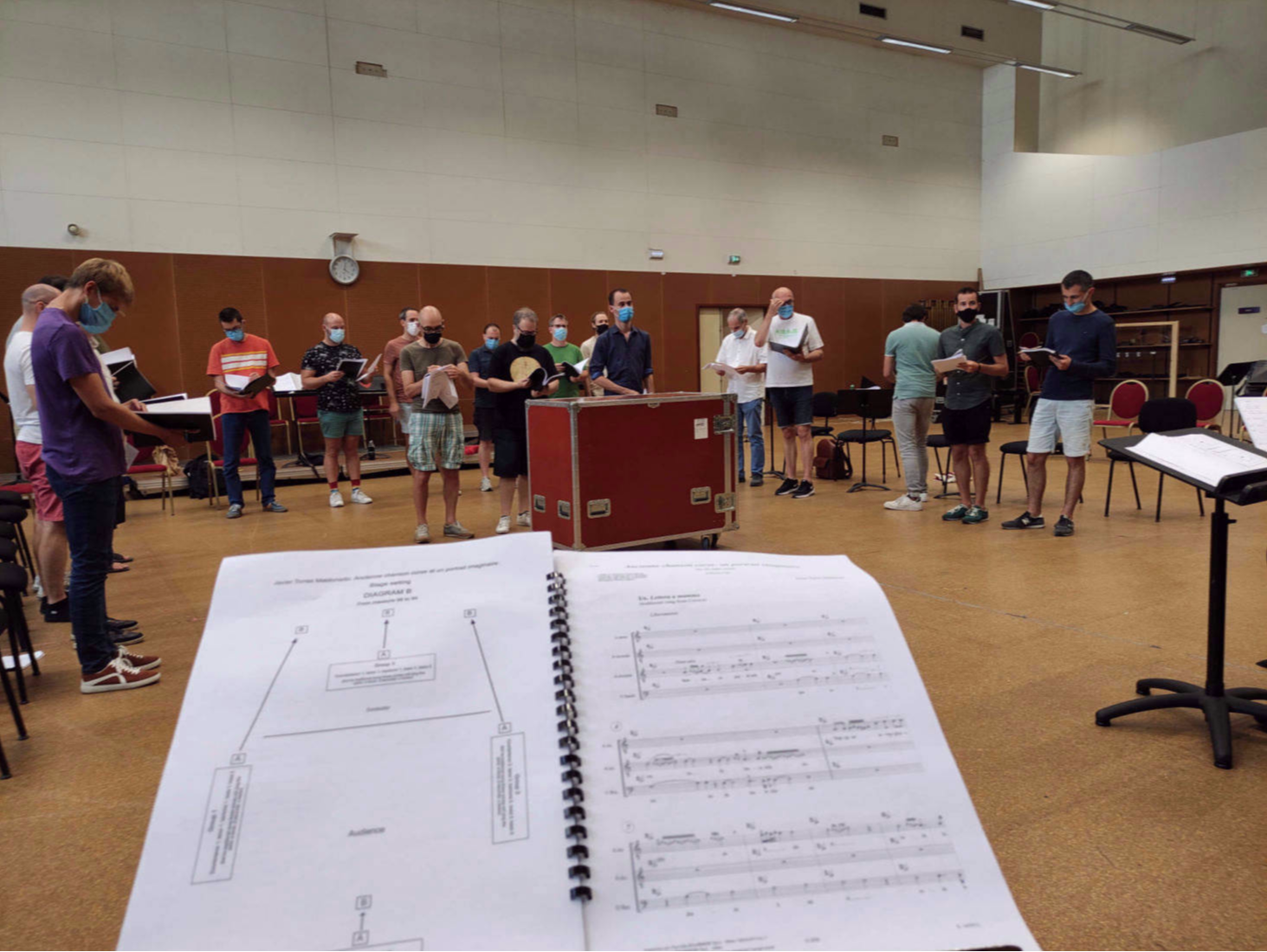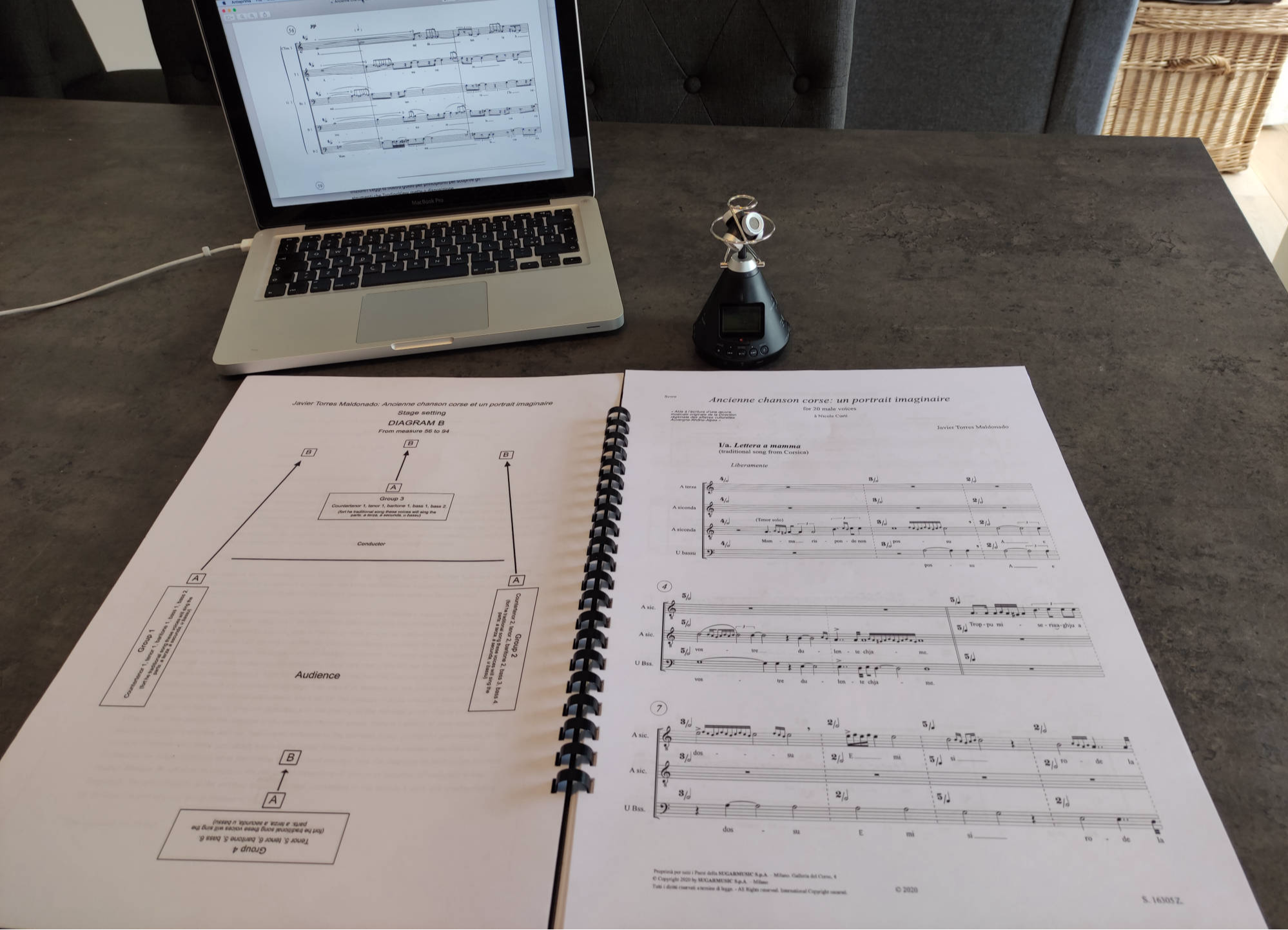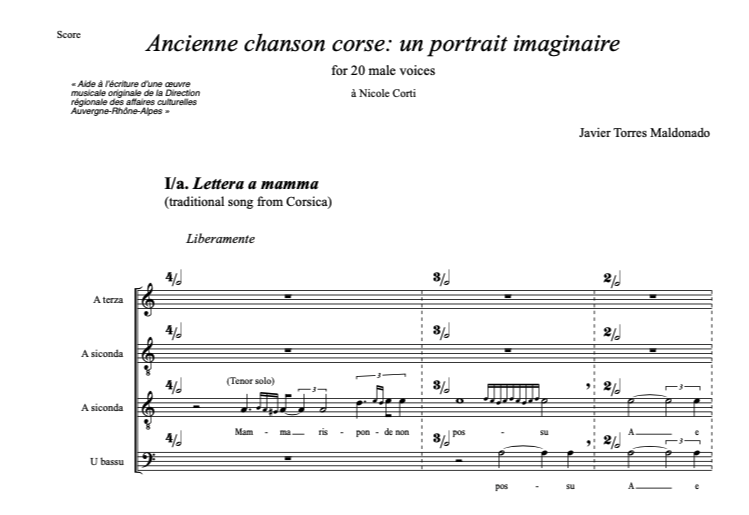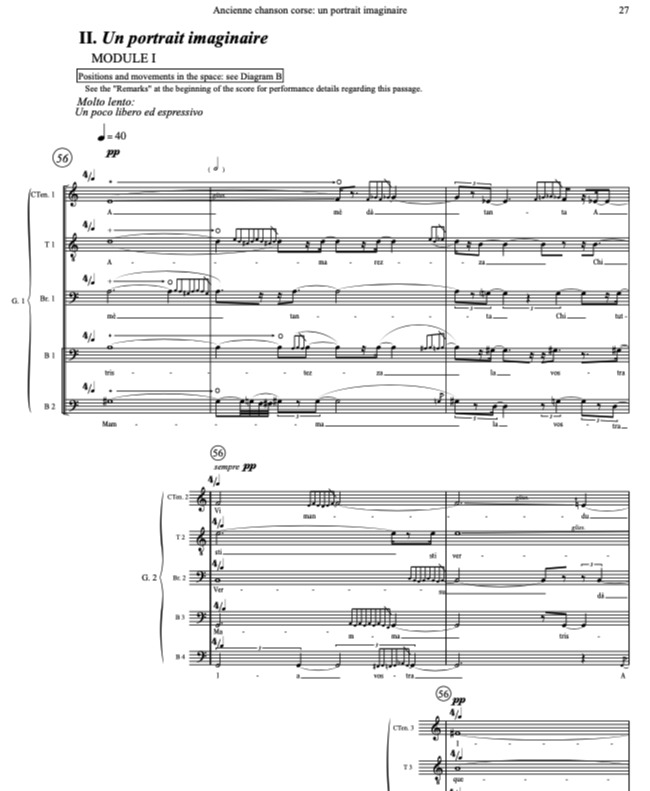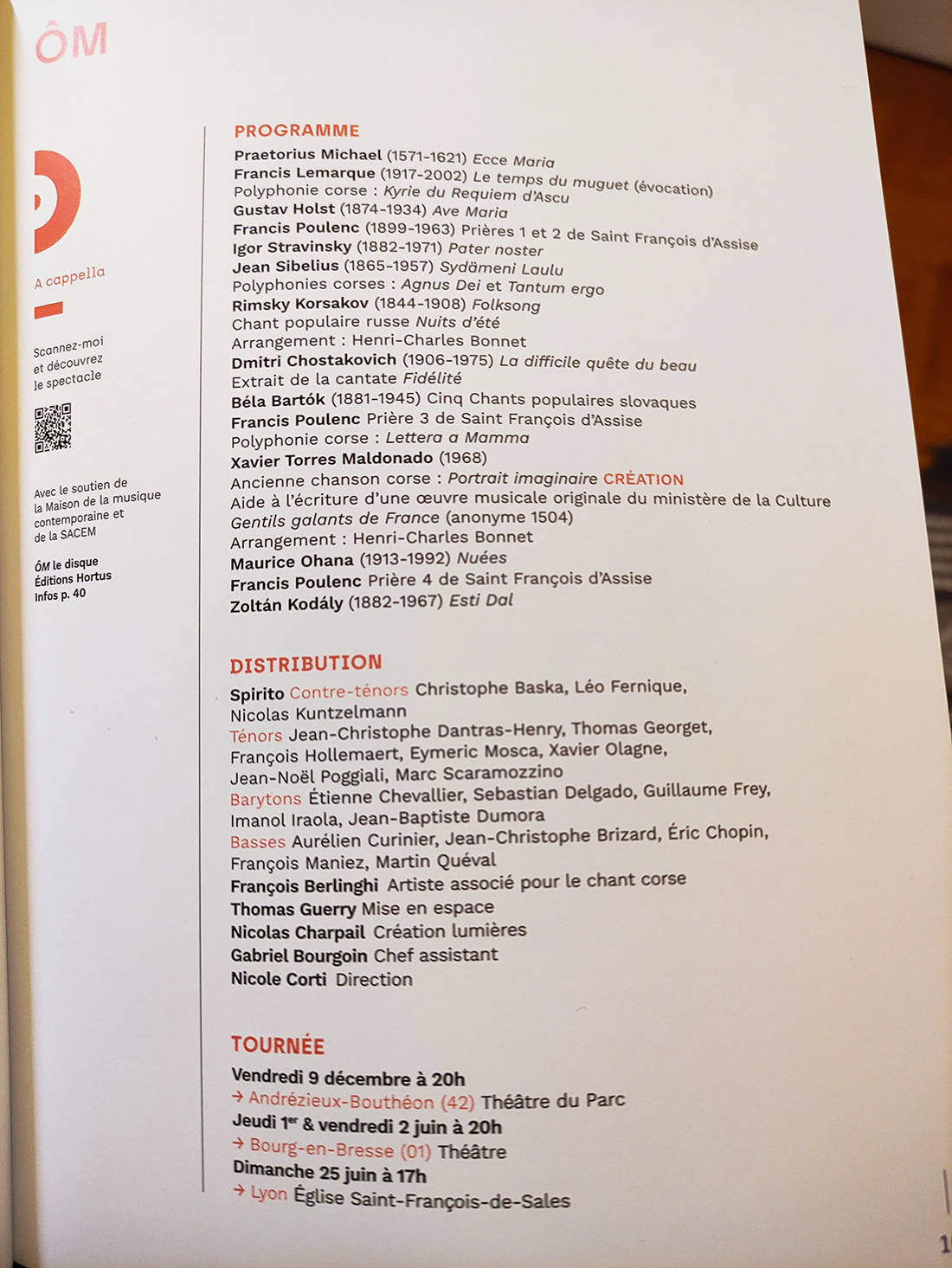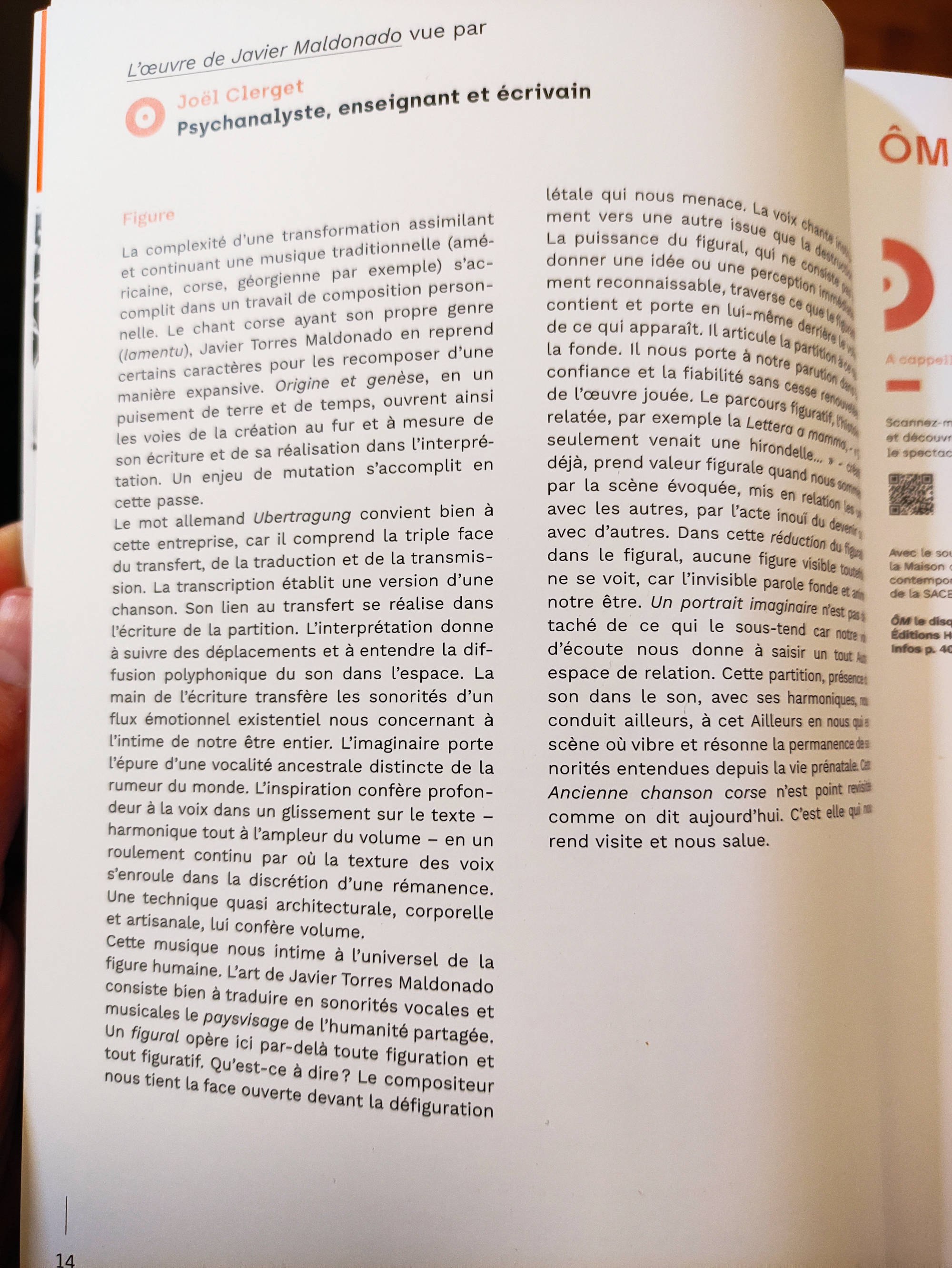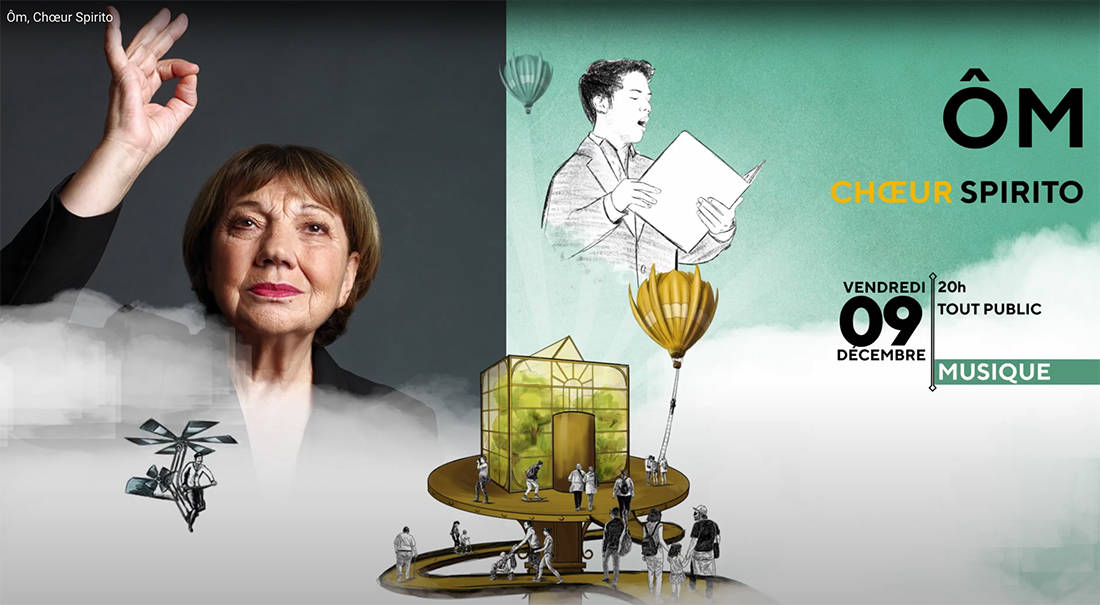ANCIENNE CHANSON CORSE: UN PORTRAIT IMAGINAIRE
for twenty male voices divided into four groups distributed throughout the space.
This work was born from the invitation of Nicole Corti, director of the French vocal ensemble Spirito, to create a work inspired by traditional Corsican music and derives from my admiration for this wonderful repertoire. The related project received the "Aide à l'écriture d'une oeuvre musicale originale" from the French Ministry of Culture in 2020.
My interest in traditional music from different cultures is nothing new: in scores like Exabrupto (1997-98), for 3 instrumental groups, a pianist and a percussionist, or Ximohua (1997), for tenor and quintet wind instruments, but also in other works from the early 2000s up to my chamber opera Viaje (2015), it is possible to identify a personal interpretation of some rhythmic and polyrhythmic characteristics of various traditional American music, natural to my geographical origin. However, my interest in traditional music is not limited only to the traditional music of one continent: in pieces such as Juegos Fantásticos (2012), for three children's choirs, female choir, didjeridoo and electronics, I have tried to renew this strongly spiritual and emotional through the appropriation of elements of music from more distant cultures, such as that of the Australian aborigines or the Arab music of North Africa. In Juegos Fantásticos there is an utopian idea which consists in looking for a thread of Ariadne, a continuity between the traditional music of different cultures, their musical elements and my work as a composer. Although the latter is characterized by its clear belonging to the world of contemporary music and by the constant search for an abstract musical language, in some works I do not give up on exploring the expressive possibilities deriving from a more open experience towards other sound worlds, as long as takes place without stylistic fractures.
Having lived in Italy for over twenty years, I have also had the opportunity to learn about various traditional Mediterranean music, including Corsican music. Thus, the material at the basis of this composition corresponds to an ancient song of the island, used until the 19th century as the musical structure at the base of the Versu Piuvisgianu (although it seems that this musical structure actually belongs to the oldest vocal polyphony of the 10th century); it is a traditional secular song which is practically a lamentu. Given its character, this musical structure was used for a letter written to his mother by Stefanu Luciani, a prisoner of Prussia during the Franco-German war of 1870. The letter expresses all the painful regret Luciani feels in his cell.
I have not only used static polychoral techniques: the ideas related to musica mutevole or more explicitly to "music with mutable spatialization" correspond to a research that I have been developing for some years and which concerns several of my latest instrumental works, such as Móvil, cambiante (2017, written for the Klangforum ensemble in Vienna), for 14 instrumentalists, ten of whom perform movements in space while playing, or High over the distant horizon (2018, commissioned by the Mozarteum to commemorate the sixtieth anniversary of the Electronic Music Studio of this institution), for piano, microtonal electric organ, cello, four moving players and electroacoustic device. These techniques combine compositional processes with spatial trajectories and dynamic polychoral games (performed by moving musicians), where the relationship between the two corresponds to a unitary conception.
The general idea behind the piece is to establish different relationships between two musical universes linked primarily by their expressiveness. The title alludes to the search for a poetic dichotomy that develops between the composition process and the original material: Ancienne chanson corse: un portrait imaginaire. In fact, the work is divided into two formal blocks, the first consisting of a "spatialized" transcription in static blocks of the lamentu, while the second (the "imaginary portrait") presents more abstract transformations of the original material, in certain moments presented in movement in space, they occur clearly, starting from an alchemy that allows reworkings, recompositions and expansive deformations, both in terms of the use of space and the characteristics of traditional Corsican music, in combination with more personal ideas and techniques . The formal contrast described is characterized by the confluence of two apparently distant musical worlds, where the assimilation of the customs of traditional Corsican music is the key to an underlying stylistic unity in the work.
